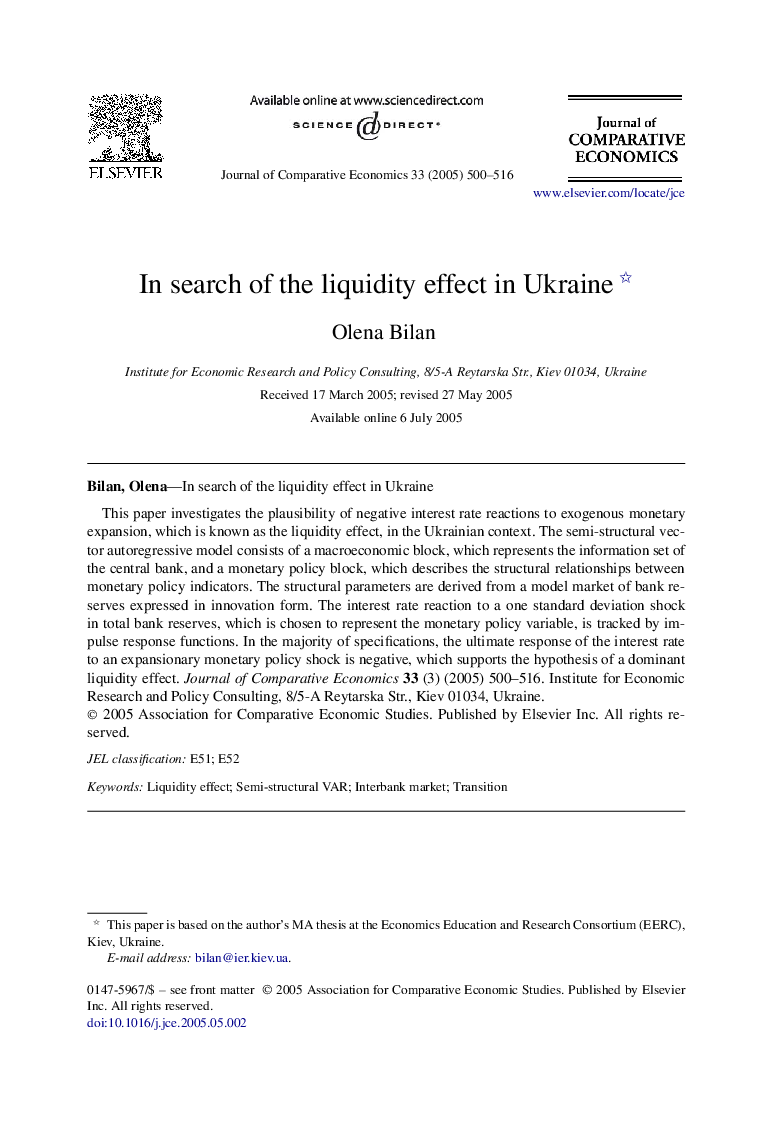| Article ID | Journal | Published Year | Pages | File Type |
|---|---|---|---|---|
| 9554462 | Journal of Comparative Economics | 2005 | 17 Pages |
Abstract
This paper investigates the plausibility of negative interest rate reactions to exogenous monetary expansion, which is known as the liquidity effect, in the Ukrainian context. The semi-structural vector autoregressive model consists of a macroeconomic block, which represents the information set of the central bank, and a monetary policy block, which describes the structural relationships between monetary policy indicators. The structural parameters are derived from a model market of bank reserves expressed in innovation form. The interest rate reaction to a one standard deviation shock in total bank reserves, which is chosen to represent the monetary policy variable, is tracked by impulse response functions. In the majority of specifications, the ultimate response of the interest rate to an expansionary monetary policy shock is negative, which supports the hypothesis of a dominant liquidity effect. Journal of Comparative Economics33 (3) (2005) 500-516.
Related Topics
Social Sciences and Humanities
Economics, Econometrics and Finance
Economics and Econometrics
Authors
Olena Bilan,
